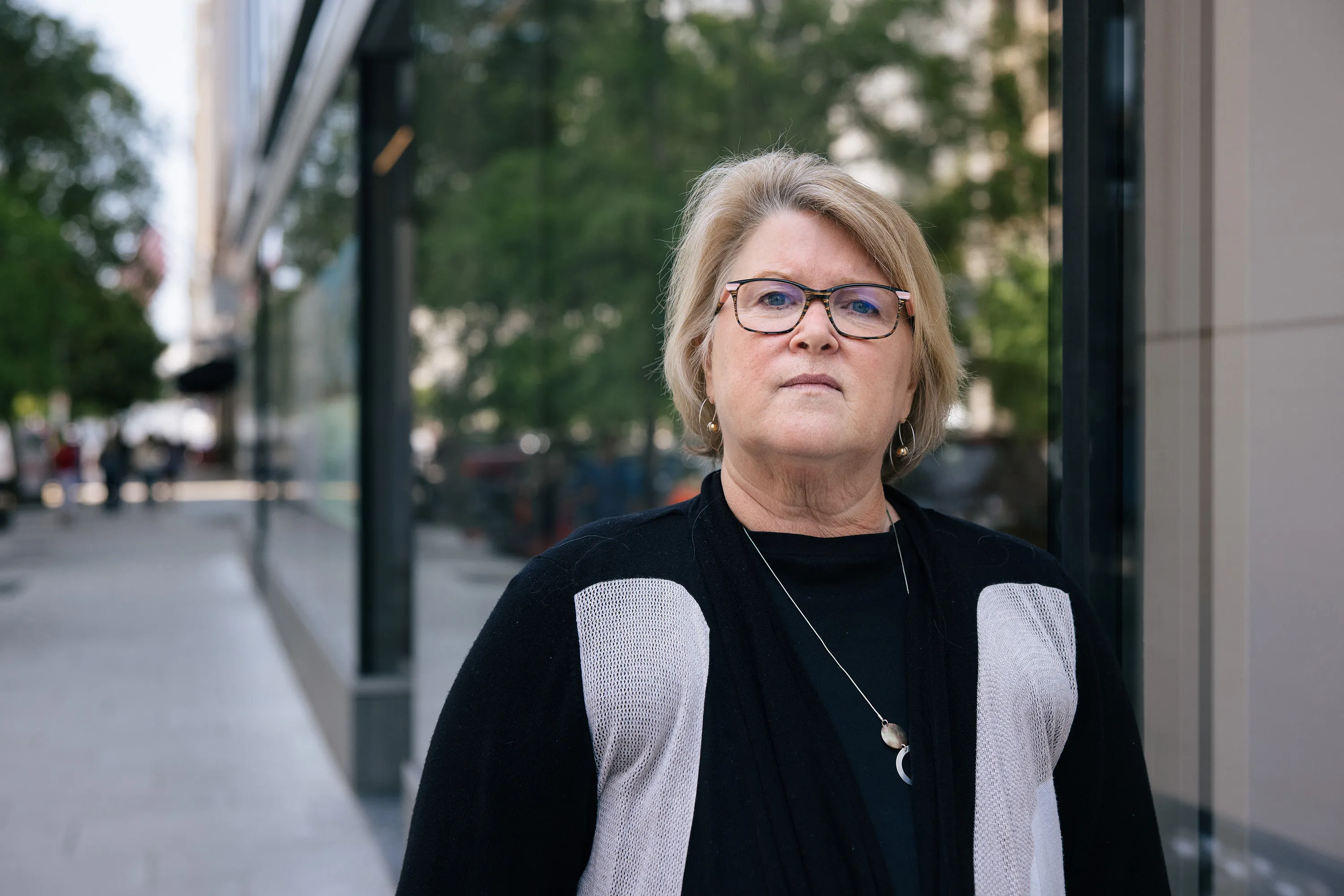It’s one of the most crucial questions people have when deciding which health plan to choose: If my doctor orders a test or treatment, will my insurer refuse to pay for it?
After all, an insurance company that routinely rejects recommended care could damage both your health and your finances. The question becomes ever more pressing as many working Americans see their premiums rise as their benefits shrink.
Yet, how often insurance companies say no is a closely held secret. There’s nowhere that a consumer or an employer can go to look up all insurers’ denial rates — let alone whether a particular company is likely to decline to pay for procedures or drugs that its plans appear to cover.
The lack of transparency is especially galling because state and federal regulators have the power to fix it, but haven’t.
ProPublica, in collaboration with The Capitol Forum, has been examining the hidden world of insurance denials. A previous story detailed how one of the nation’s largest insurers flagged expensive claims for special scrutiny; a second story showed how a different top insurer used a computer program to bulk-deny claims for some common procedures with little or no review.
The findings revealed how little consumers know about the way their claims are reviewed — and denied — by the insurers they pay to cover their medical costs.
When ProPublica set out to find information on insurers’ denial rates, we hit a confounding series of roadblocks.
In 2010, federal regulators were granted expansive authority through the Affordable Care Act to require that insurers provide information on their denials. This data could have meant a sea change in transparency for consumers. But more than a decade later, the federal government has collected only a fraction of what it’s entitled to. And what information it has released, experts say, is so crude, inconsistent and confusing that it’s essentially meaningless.
The national group for state insurance commissioners gathers a more detailed, reliable trove of information. Yet, even though commissioners’ primary duty is to protect consumers, they withhold nearly all of these details from the public. ProPublica requested the data from every state’s insurance department, but none provided it.
Two states collect their own information on denials and make it public, but their data covers only a tiny subset of health plans serving a small number of people.
The minuscule amount of details available about denials robs consumers of a vital tool for comparing health plans.
“This is life and death for people: If your insurance won’t cover the care you need, you could die,” said Karen Pollitz, a senior fellow at KFF (formerly known as the Kaiser Family Foundation) who has written repeatedly about the issue. “It’s all knowable. It’s known to the insurers, but it is not known to us.”
The main trade groups for health insurance companies, AHIP (formerly known as America’s Health Insurance Plans) and the Blue Cross Blue Shield Association, say the industry supports transparency and complies with government disclosure requirements. Yet the groups have often argued against expanding this reporting, saying the burdens it would impose on insurance companies would outweigh the benefits for consumers.
“Denial rates are not directly comparable from one health plan to another and could lead consumers to make inaccurate conclusions on the robustness of the health plan,” Kelly Parsons, director of media relations for the Blue Cross Blue Shield Association, said in an email.
The trade groups stress that a substantial majority of patient claims are approved and that there can be good reasons — including errors and incomplete information from doctors — for some to be denied.
“More abstract data about percentages of claims that are approved or denied have no context and are not a reliable indicator of quality — it doesn’t address why a claim was or was not approved, what happened after the claim was not approved the first time, or how a patient or their doctor can help ensure a claim will be approved,” AHIP spokesperson Kristine Grow said in a written response to questions from ProPublica. “Americans deserve information and data that has relevance to their own personal health and circumstances.”
The limited government data available suggests that, overall, insurers deny between 10% and 20% of the claims they receive. Aggregate numbers, however, shed no light on how denial rates may vary from plan to plan or across types of medical services.
Some advocates say insurers have a good reason to dodge transparency. Refusing payment for medical care and drugs has become a staple of their business model, in part because they know customers appeal less than 1% of denials, said Wendell Potter, who oversaw Cigna’s communications team for more than a decade before leaving the industry in 2008 to become a consumer advocate.
“That’s money left on the table that the insurers keep,” he said.
At least one insurer disputes this. Potter’s former employer, Cigna, said in an email that his “unsubstantiated opinions” don’t reflect the company’s business model. In a separate written statement, Cigna said it passes on the money it saves “by lowering the cost of health care services and reducing wasteful spending” to the employers who hire it to administer their plans or insure their workers.
The few morsels insurers have served up on denials stand in stark contrast to the avalanche of information they’ve divulged in recent years on other fronts, often in response to government mandates. Starting last year, for example, insurers began disclosing the prices they’ve negotiated to pay medical providers for most services.
Experts say it’ll take similar mandates to make insurers cough up information on denials, in part because they fear plans with low denial rates would be a magnet for people who are already ailing.
“Health plans would never do that voluntarily, would give you what their claim denial rates are, because they don’t want to attract sicker people,” said Mila Kofman, who leads the District of Columbia’s Affordable Care Act exchange and previously served as Maine’s superintendent of insurance.
About 85% of people with insurance who responded to a recent KFF survey said they want regulators to compel insurers to disclose how often they deny claims. Pollitz, who co-authored a report on the survey, is a cancer survivor who vividly recalls her own experiences with insurance denials.
“Sometimes it would just make me cry when insurance would deny a claim,” she said. “It was like, ‘I can’t deal with this now, I’m throwing up, I just can’t deal with this.’”

She should have been able to learn how her plan handled claims for cancer treatment compared with other insurers, she said.
“There could be much more accountability.”
In September 2009, amid a roiling national debate over health care, the California Nurses Association made a startling announcement: Three of the state’s six largest health insurers had each denied 30% or more of the claims submitted to them in the first half of the year.
California insurers instantly said the figures were misleading, inflated by claims submitted in error or for patients ineligible for coverage.
But beyond the unexpectedly high numbers, the real surprise was that the nurses association was able to figure out the plans’ denial rates at all, by using information researchers found on the California Department of Managed Health Care’s website.
At the time, no other state or federal regulatory agency was collecting or publishing details about how often private insurers denied claims, a 2009 report by the Center for American Progress found.
The Affordable Care Act, passed the following year, was a game changer when it came to policing insurers and pushing them to be more transparent.
The law took aim at insurers’ practice of excluding people with preexisting conditions, the most flagrant type of denial, and required companies offering plans on the marketplaces created under the law to disclose their prices and detail their benefits.
A less-noticed section of the law demanded transparency from a much broader group of insurers about how many claims they turned down, and it put the Department of Health and Human Services in charge of making this information public. The disclosure requirements applied not only to health plans sold on the new marketplaces but also to the employer plans that cover most Americans.
The law’s proponents in the Obama administration said they envisioned a flow of accurate, timely information that would empower consumers and help regulators spot problematic insurers or practices.
That’s not what happened.
The federal government didn’t start publishing data until 2017 and thus far has only demanded numbers for plans on the federal marketplace known as Healthcare.gov. About 12 million people get coverage from such plans — less than 10% of those with private insurance. Federal regulators say they eventually intend to compel health plans outside the Obamacare exchanges to release details about denials, but so far have made no move to do so.
Within the limited universe of Healthcare.gov, KFF’s analyses show that insurers, on average, deny almost 1 in 5 claims and that each year some reject more than 1 in 3.
But there are red flags that suggest insurers may not be reporting their figures consistently. Companies’ denial rates vary more than would be expected, ranging from as low as 2% to as high as almost 50%. Plans’ denial rates often fluctuate dramatically from year to year. A gold-level plan from Oscar Insurance Company of Florida rejected 66% of payment requests in 2020, then turned down just 7% in 2021. That insurer’s parent company, Oscar Health, was co-founded by Joshua Kushner, the younger brother of former President Donald Trump’s son-in-law Jared Kushner.
An Oscar Health spokesperson said in an email that the 2020 results weren’t a fair reflection of the company’s business “for a variety of reasons,” but wouldn’t say why. “We closely monitor our overall denial rates and they have remained comfortably below 20% over the last few years, including the 2020-2021 time period,” the spokesperson wrote.
Experts say they can’t tell if insurers with higher denial rates are counting differently or are genuinely more likely to leave customers without care or stuck with big bills.
“It’s not standardized, it’s not audited, it’s not really meaningful,” Peter Lee, the founding executive director of California’s state marketplace, said of the federal government’s information. Data, he added, “should be actionable. This is not by any means right now.”
Officials at the Centers for Medicare & Medicaid Services, which collects the denial numbers for the federal government, say they’re doing more to validate them and improve their quality. It’s notable, though, that the agency doesn’t use this data to scrutinize or take action against outliers.
“They’re not using it for anything,” Pollitz said.
Pollitz has co-authored four reports that call out the data’s shortcomings. An upshot of all of them: Much of what consumers would most want to know is missing.
The federal government provides numbers on insurers’ denials of claims for services from what the industry calls “in-network” medical providers, those who have contracts with the insurer. But it doesn’t include claims for care outside those networks. Patients often shoulder more costs for out-of-network services, ramping up the import of these denials.
In recent years, doctors and patients have complained bitterly that insurers are requiring them to get approval in advance for an increasing array of services, causing delays and, in some instances, harm. The government, however, hasn’t compelled insurers to reveal how many requests for prior authorization they get or what percent they deny.
These and other specifics — particularly about which procedures and treatments insurers reject most — would be necessary to turn the government’s data into a viable tool to help consumers choose health plans, said Eric Ellsworth, the director of health data strategy at Consumers’ Checkbook, which designs such tools.
A spokesperson for CMS said that, starting in plan year 2024, the agency will require insurers offering federal marketplace plans to submit a few more numbers, including on out-of-network claims, but there’s no timeline yet for much of what advocates say is necessary.
Another effort, launched by a different set of federal regulators, illustrates the resistance that government officials encounter when they consider demanding more.
The U.S. Department of Labor regulates upwards of 2 million health plans, including many in which employers pay directly for workers’ health care coverage rather than buying it from insurance companies. Roughly two-thirds of American workers with insurance depend on such plans, according to KFF.
In July 2016, an arm of the Labor Department proposed rules requiring these plans to reveal a laundry list of never-before-disclosed information, including how many claims they turned down.
In addition, the agency said it was considering whether to demand the dollar amount of what the denied care cost, as well as a breakdown of the reasons why plans turned down claims or denied behavioral health services.
The disclosures were necessary to “remedy the current failure to collect data about a large sector of the health plan market,” as well as to satisfy mandates in the Affordable Care Act and provide critical information for agency oversight, a Labor Department factsheet said.
Trade groups for employers, including retailers and the construction industry, immediately pushed back.
The U.S. Chamber of Commerce said complying with the proposal would take an amount of work not justified by “the limited gains in transparency and enforcement ability.” The powerful business group made it sound like having to make the disclosures could spark insurance Armageddon: Employers might cut back benefits or “eliminate health and welfare benefits altogether.”
Trade groups for health insurance companies, which often act as administrators for employers that pay directly for workers’ health care, joined with business groups to blast the proposal. The Blue Cross Blue Shield Association called the mandated disclosures “burdensome and expensive.” AHIP questioned whether the Labor Department had the legal authority to collect the data and urged the agency to withdraw the idea “in its entirety.”
The proposal also drew opposition from another, less expected quarter: unions. Under some collective bargaining agreements, unions co-sponsor members’ health plans and would have been on the hook for the new reporting requirements, too. The AFL-CIO argued the requirements created a higher standard of disclosure for plans overseen by the Labor Department. To be fair and avoid confusion, the group said, the Labor Department should put its rules on ice until federal health regulators adopted equivalent ones for plans this proposal didn’t cover.
That left the transparency push without political champions on the left or the right, former Assistant Secretary of Labor Phyllis Borzi, who ran the part of the agency that tried to compel more disclosure, said in a recent interview.
“When you’re up against a united front from the industry, the business community and labor, it’s really hard to make a difference,” she said.
By the time the Labor Department stopped accepting feedback, Donald Trump had been elected president.
One trade association for large employers pointed out that the Affordable Care Act, which partly drove the new rules, was “a law that the incoming Administration and the incoming leadership of the 115th Congress have vowed to repeal, delay, dismantle, and otherwise not enforce.”
The law managed to survive the Trump administration, but the Labor Department’s transparency push didn’t. The agency withdrew its proposal in September 2019.
A Labor Department spokesperson said the Biden administration has no immediate plan to revive it.
Ultimately, it’s the National Association of Insurance Commissioners, a group for the top elected or appointed state insurance regulators, that has assembled the most robust details about insurance denials.
The association’s data encompasses more plans than the federal information, is more consistent and captures more specifics, including numbers of out-of-network denials, information about prior authorizations and denial rates for pharmacy claims. All states except New York and North Dakota participate.
Yet, consumers get almost no access. The commissioners’ association only publishes national aggregate statistics, keeping the rest of its cache secret.
When ProPublica requested the detailed data from each state’s insurance department, none would hand it over. More than 30 states said insurers had submitted the information under the authority commissioners are granted to examine insurers’ conduct. And under their states’ codes, they said, examination materials must be kept confidential.
The commissioners association said state insurance regulators use the information to compare companies, flag outliers and track trends.
Birny Birnbaum, a longtime insurance watchdog who serves on the group’s panel of consumer representatives, said the association’s approach reflects how state insurance regulators have been captured by the insurance industry’s demands for secrecy.
“Many seem to view their roles as protectors of industry information, as opposed to enforcers of public information laws,” Birnbaum said in an email.
Connecticut and Vermont compile their own figures and make them publicly accessible. Connecticut began reporting information on denials first, adding these numbers to its annual insurer report card in 2011.
Vermont demands more details, requiring insurers that cover more than 2,000 Vermonters to publicly release prior authorization and prescription drug information that is similar to what the state insurance commissioners collect. Perhaps most usefully, insurers have to separate claims denied because of administrative problems — many of which will be resubmitted and paid — from denials that have “member impact.” These involve services rejected on medical grounds or because they are contractually excluded.
Mike Fisher, Vermont’s state health care advocate, said there’s little indication consumers or employers are using the state’s information, but he still thinks the prospect of public scrutiny may have affected insurers’ practices. The most recent data shows Vermont plans had denial rates between 7.7% and 10.26%, considerably lower than the average for plans on Healthcare.gov.
“I suspect that’s not a coincidence,” Fisher said. “Shining a light on things helps.”
Despite persistent complaints from insurers that Vermont’s requirements are time-consuming and expensive, no insurers have left the state over it. “Certainly not,” said Sebastian Arduengo, who oversees the reporting for the Vermont Department of Financial Regulation.
In California, once considered the most transparent state, the Department of Managed Health Care in 2011 stopped requiring insurance carriers to specify how many claims they rejected.
A department spokesperson said in an email that the agency follows the requirements in state law, and the law doesn’t require health plans to disclose denials.
The state posts reports that flag some plans for failing to pay claims fairly and on time. Consumers can use those to calculate bare-bones denial rates for some insurers, but for others, you’d have to file a public records request to get the details needed to do the math.
Despite the struggles of the last 15 years, Pollitz hasn’t given up hope that one day there will be enough public information to rank insurers by their denial rates and compare how reliably they provide different services, from behavioral health to emergency care.
“There’s a name and shame function that is possible here,” she said. “It holds some real potential for getting plans to clean up their acts.”


















